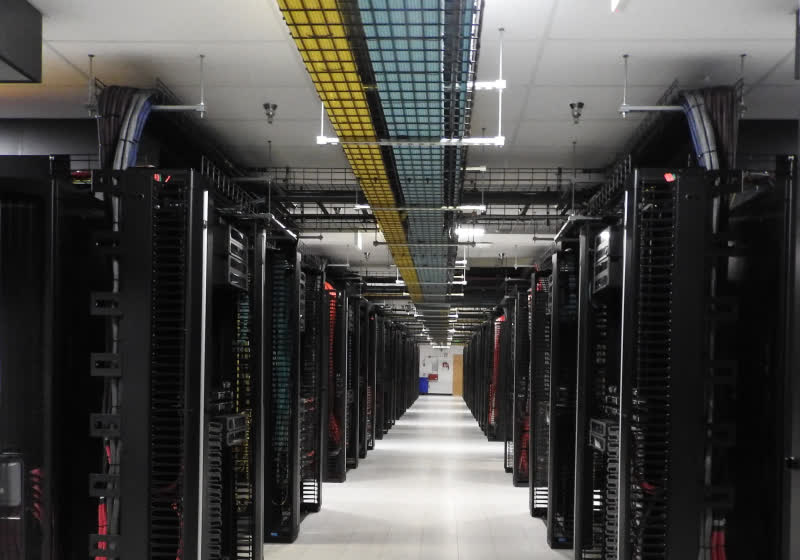VMware Pricing Shock: AT&T Reports 1,050% Increase Due To Broadcom

Table of Contents
Understanding the Broadcom-VMware Acquisition and its Impact on Pricing
Broadcom's acquisition of VMware, a deal worth over $61 billion, closed in late 2022, immediately raising concerns about potential price increases for VMware's extensive client base. Broadcom, known for its history of acquisitions and subsequent cost-cutting measures, now controls a significant portion of the virtualization market. While consolidation can sometimes lead to efficiencies, the sheer magnitude of the price increases experienced by some clients suggests more is at play. Beyond simple economies of scale, several factors likely contributed to this surge in VMware licensing costs:
- Increased operational costs post-acquisition: The integration of two massive companies inevitably incurs significant costs, which may be passed on to clients.
- Market dominance allowing for price increases: With a dominant market share, Broadcom may be leveraging its power to increase prices, knowing many clients have limited viable alternatives.
- Shift in licensing models: The acquisition might lead to changes in licensing models, potentially resulting in higher costs for existing clients.
- Integration costs passed on to clients: The considerable expense of merging VMware's infrastructure and operations with Broadcom's could be directly reflected in higher licensing fees.
The AT&T Case Study: A 1050% VMware Licensing Cost Increase
AT&T's experience serves as a stark warning for other VMware customers. The company reportedly saw a 1050% increase in its VMware licensing costs, impacting numerous products within its infrastructure. While the exact details of the affected products remain undisclosed, the sheer scale of the increase signifies a potential crisis for AT&T's IT budget and operational efficiency.
- Specific VMware products impacted: The exact VMware products affected by the price increase are not publicly available, highlighting the lack of transparency in some contract negotiations.
- Financial implications for AT&T: A 1050% increase represents a massive financial burden, potentially impacting investment in other crucial areas of the business.
- Potential alternatives being explored by AT&T: Faced with such a drastic increase, AT&T is likely exploring alternative virtualization solutions to mitigate the impact.
- Impact on AT&T's services and customers: The increased costs could indirectly affect AT&T's services and potentially impact customer experience.
Implications for Other VMware Customers and the Enterprise Software Market
AT&T's situation is not isolated. Many other VMware customers now face the unsettling prospect of similar price increases. This situation has significant implications for the entire enterprise software market:
- Risk of similar price increases for other clients: The precedent set by AT&T's experience suggests that other large VMware clients might also experience substantial cost hikes.
- Increased pressure on IT budgets: The sudden increase in VMware licensing costs puts significant pressure on already strained IT budgets across various industries.
- Potential for market consolidation: Higher VMware licensing costs might accelerate the consolidation within the enterprise software market as businesses seek more cost-effective alternatives.
- Shift towards open-source alternatives: The price shock could trigger a wider adoption of open-source virtualization solutions, potentially disrupting the market dominance of VMware.
- Need for better contract negotiation strategies: Businesses need to develop more robust contract negotiation strategies to avoid similar situations in the future.
Strategies for Managing VMware Licensing Costs Post-Acquisition
For businesses relying on VMware products, proactive strategies are crucial to manage escalating licensing costs:
- Negotiating better contract terms: Aggressively negotiate with VMware to secure more favorable licensing agreements.
- Optimizing VMware deployments: Identify and eliminate redundant or underutilized resources to reduce licensing needs.
- Exploring open-source alternatives: Evaluate open-source virtualization options like Proxmox VE or oVirt as potential cost-effective alternatives.
- Cloud migration strategies: Consider migrating workloads to cloud platforms to potentially reduce on-premise licensing costs.
- Software license management tools: Implement robust software license management tools to accurately track and manage VMware licenses, preventing overspending.
Conclusion: Navigating the VMware Pricing Shock
The Broadcom acquisition of VMware has undeniably led to a significant price increase, exemplified by AT&T's staggering 1050% increase in VMware licensing costs. This event has far-reaching consequences for other VMware customers and the broader enterprise software market. Businesses must proactively review their VMware contracts, exploring alternative virtualization solutions and implementing cost-saving measures to mitigate potential future VMware pricing shocks. Thorough research into VMware licensing costs and the implications of the Broadcom acquisition is essential for navigating this changing landscape.

Featured Posts
-
 1509
May 09, 2025
1509
May 09, 2025 -
 Brekelmans En India Een Partnerschap Onder De Loep
May 09, 2025
Brekelmans En India Een Partnerschap Onder De Loep
May 09, 2025 -
 Palantir Stock Price Prediction And Buy Sell Recommendation
May 09, 2025
Palantir Stock Price Prediction And Buy Sell Recommendation
May 09, 2025 -
 Millions Lost Inside The Office365 Executive Account Hacking Scheme
May 09, 2025
Millions Lost Inside The Office365 Executive Account Hacking Scheme
May 09, 2025 -
 2025 82000
May 09, 2025
2025 82000
May 09, 2025
